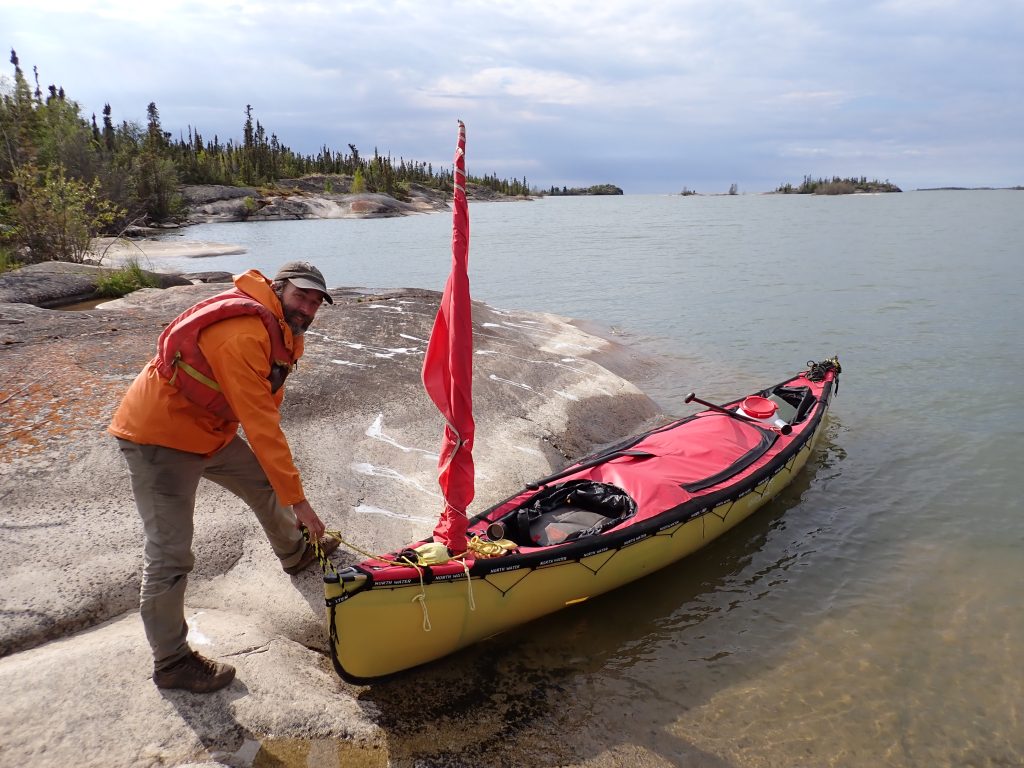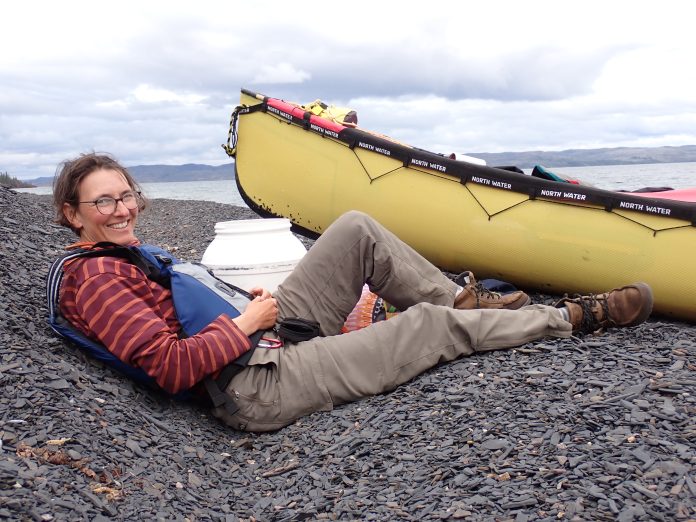In June 2022, Miriam Körner and Quincy Miller left La Ronge for what would be a 72-day, approximately 1,600 km canoe trip.
The goal? To become immersed in the unseen wilderness.
“(It’s) the draw to the bush wilderness and the possibility of knowing you’re going to be seeing undisturbed wilderness for days and days,” Miller said. “You’re emersed in it, right?”
It was much the same for Körner.
“I was really sickened and discouraged by the amount of extractives activity around here, like the clear cutting that was happening, the threat of peat mining. I just need to be at a place where we wouldn’t run into that,” she said in an interview with the Northern Advocate.
With the exception of two camps, they were successful.
“For a big stretch, the only human activity we saw was people living with the land. Like we saw where people had lived in the past, where they are still going to day to hunt caribou mainly. But, there was no big industrializing parts on that land and, I think, that’s what was drawing us to that area.
Planning for the trip went back and forth. They thought of different trips they could take.
“We wanted it to be a long trip … [it was] maybe a couple of weeks before the trip, we finally decided.”
They knew people in Black Lake and had travelled, either by canoe or dog team, from either end of the route they chose between Black Lake, Sask. and Yellowknife, NWT.
“There was just a stretch in the middle where we weren’t sure if there was a route and people that went that way. That was a bit of an unknown,” Körner said.
With some unknowns such as, “where the trails and portages were. Lots of times it was just bush wack. There wasn’t any portages at all.”
Another project – food.
“We dehydrated most of our meals before an d like we had lots of moose jerky we brought flour for bannock, but we had dehydrated potatoes and beans. We brought rice and wild rice and then we supplemented with fish,” Körner said.
“Basically, our dehydrator ran for about three weeks ahead of time,” Miller said.
Winds they faced as they approached the Barrens, were a challenge, along with colder temperatures.

The challenge – “There was a lot of time we were wind bound and that was always a little bit hard working, because you keep counting your days that you have and the mileage you made. You start wondering about food. I think, for me, that was the biggest challenge,” Körner said.
To combat the wind challenge, they began the day early, around 3 or 4 a.m. and had their main meal at noon to give themselves a break from paddling. They cooked over an open fire, so that meant gathering wood and cooking the meal, which gave them different exercise.
Another challenge came about halfway; their GPS, on which they relied, stopped working.
“Our GPS quit working, so, on that last stretch … we kind of felt like the people had to do in the old days, run up a hill and try to figure out what we see to match what’s on the map, so that took a little extra time,” she said.
“That challenged our navigation skills. Especially when we did a few unscenic routes, I guess,” Miller said, adding they travelled one lake more than once.
Portages sometimes took up to six crossings to carry all their gear and place the canoe in the next body of water also.
“Some days there was lots of portages, so unpacking everything usually making three to four trips across the portages carrying all the gear, carrying the canoe, then putting it in the next body of water,” Körner said.
While they didn’t see as much wildlife as they expected, they did have a did see many muskox, some wolves.
They also worked time for hikes “just to see the country” and on the sandy beaches they would quote often stop to fish.
“That was part of the draw to that route that we chose The geological variation and terrain. It’s pretty amazing,” Miller said.
Moving into the Barens brought them into and openness and scenery “not as cloaked in vegetation. There is vegetation, bit it’s small and it comes with its own wonders. You know small plants that have all sorts of different colours and wonderful things. That vastness I guess … It gives you the opportunity to see wildlife, you know, that you wouldn’t necessarily see in the forest. And the waters were incredible … you can see to incredible depths,” Miller said, adding some lakes you could see fish and even see right to the bottom. They were so clear.
The different birds were an attraction for Körner. At one point they saw an owl, they watched and even camped close buy and were rewarded with seeing a baby owlet.
Loons were gathering on Great Slave Lake and one night the group seemed to get larger with 20 to 30 loons. They camped on an island close by. “Loons were swimming in from all directions and all of a sudden there were 70. They swam several times around the island and stayed overnight,” she said.
“I went swimming with them,” Körner said, laughing.
Paddling into Yellowknife was a different experience. The noise, “we just couldn’t make sense of it,” Miller said adding a barge came by them and all the mechanical noise.
They spend a week in Yellowknife before returning home.
“It was very nice to see our dogs. That’s one of the hardest parts is leaving our dogs behind,” Miller said.
But, although a couple of pups were a bit shy of them for a day, they soon welcomed them home.
As a result of the trip, Miller said, “I certainly have more of an idea that I would like to lead a simpler lifestyle and may be a little bit closer to the wilderness than we have around here.”


